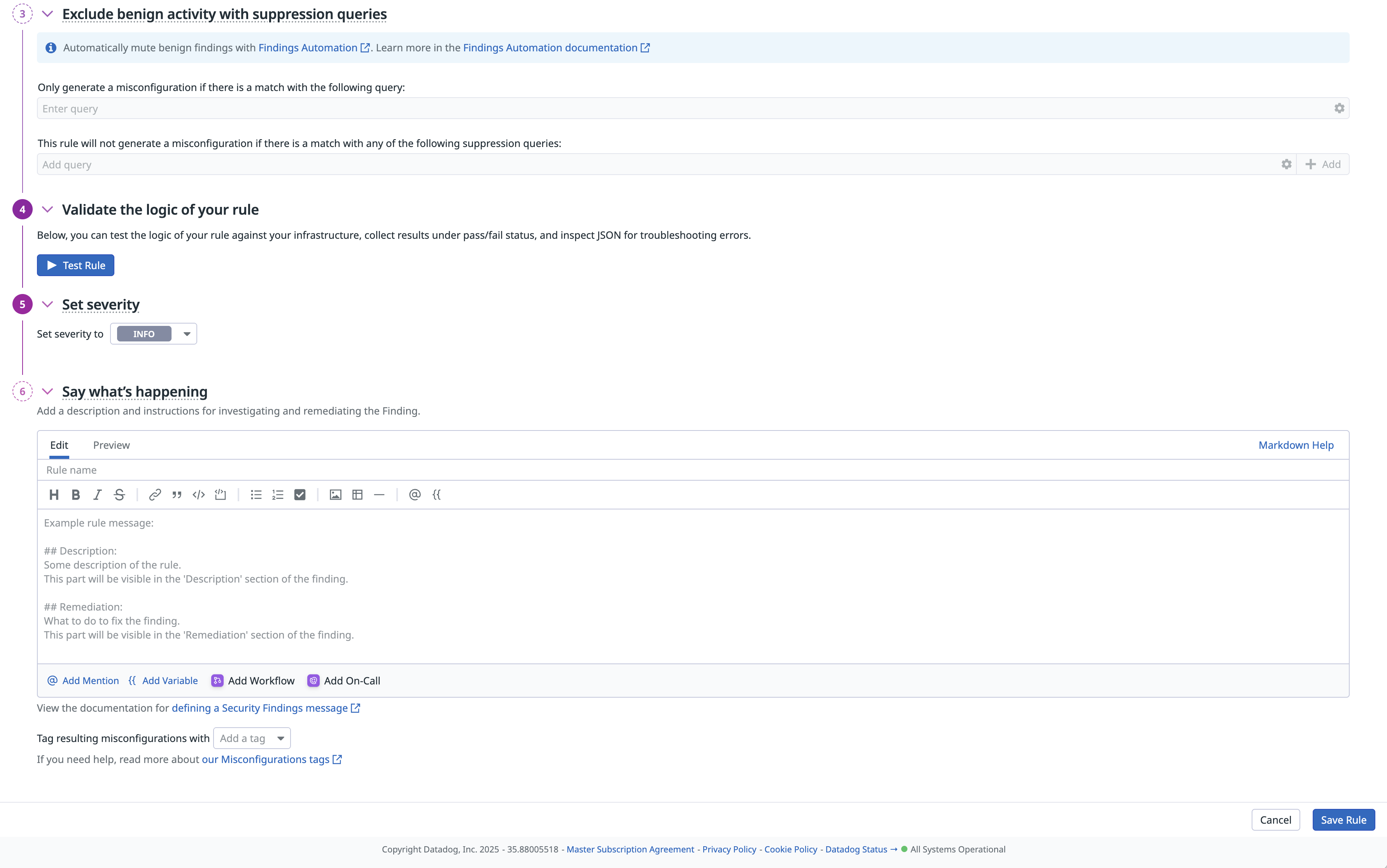- 重要な情報
- はじめに
- 用語集
- Standard Attributes
- ガイド
- インテグレーション
- エージェント
- OpenTelemetry
- 開発者
- Administrator's Guide
- API
- Partners
- DDSQL Reference
- モバイルアプリケーション
- CoScreen
- CoTerm
- Remote Configuration
- Cloudcraft
- アプリ内
- ダッシュボード
- ノートブック
- DDSQL Editor
- Reference Tables
- Sheets
- Watchdog
- アラート設定
- メトリクス
- Bits AI
- Internal Developer Portal
- Error Tracking
- Change Tracking
- Service Management
- Actions & Remediations
- インフラストラクチャー
- Cloudcraft
- Resource Catalog
- ユニバーサル サービス モニタリング
- Hosts
- コンテナ
- Processes
- サーバーレス
- ネットワークモニタリング
- Cloud Cost
- アプリケーションパフォーマンス
- APM
- Continuous Profiler
- データベース モニタリング
- Data Streams Monitoring
- Data Jobs Monitoring
- Data Observability
- Digital Experience
- RUM & セッションリプレイ
- Synthetic モニタリング
- Continuous Testing
- Product Analytics
- Software Delivery
- CI Visibility (CI/CDの可視化)
- CD Visibility
- Deployment Gates
- Test Visibility
- Code Coverage
- Quality Gates
- DORA Metrics
- Feature Flags
- セキュリティ
- セキュリティの概要
- Cloud SIEM
- Code Security
- クラウド セキュリティ マネジメント
- Application Security Management
- Workload Protection
- Sensitive Data Scanner
- AI Observability
- ログ管理
- Observability Pipelines(観測データの制御)
- ログ管理
- CloudPrem
- 管理
カスタムルールを作成する
概要
セキュリティ体制を評価するために環境に適用されているルールを拡張するには、コンプライアンスルールをクローンしてコピーを編集したり、最初から独自のルールを作成することができます。 カスタムルールで使用可能なリソースタイプの一覧を表示するには、Cloud Resources Schema を参照してください。
ルールの複製
ルールを複製するには
- コピーしたいルールを探すには、次のいずれかの方法を行います。
- Misconfigurations Rules ページに移動します。コピーしたいルールを選択し、その詳細ページを開きます。
- Misconfigurations explorer に移動します。誤構成を選択して詳細を開き、 Edit Rule を選択します。
- 新しいルールのために必要な変更を行います。
- 詳細ページの一番下までスクロールして、Clone Rule をクリックします。
ルールの作成
ルールを一から作成するには
Misconfigurations Rules ページに移動します。
右上の New Rule をクリックします。
ルールの種類として、Cloud Configuration を選択します。
ルールを記述するクラウドリソースタイプを指定します。
Policy as Code 言語である Rego を使用して、ゼロから、または Datadog のテンプレートを使用して、ルールロジックを記述します。詳しくは、Rego によるカスタムルールの作成を参照してください。リソースを “pass”、“fail”、“skip” としてマークすることができることに注意してください。マークを付けなかった場合、リソースは “skip” として解釈されます。
特定のリソースを誤構成に含める、または誤構成から除外するクエリを指定することで、無害なアクティビティを除外することができます。
リソースを選択し、Test Rule をクリックすることで、ルールのロジックを検証することができます。どのリソースが合格し、失敗したかを、対応するリソースタグとともに確認できます。
ルールの重大度 (
Critical、High、Medium、Low、またはInfo) を指定します。ファセットを選択し (リソースタイプごと、アカウント ID ごとなど)、シグナルを送る通知先を指定します。
Say what’s happening では、通知のための説明を書き、通知オプションを使用して有用なものにします。詳しくは、通知をご覧ください。
結果の誤構成に適用するタグを指定します。詳しくは、誤構成のタグ付けを参照してください。
Save Rule をクリックします。
誤構成のタグ付け
Cloud Security Misconfigurations のコンプライアンス ルールを作成・複製・変更する際は、誤構成に適用するタグを指定できます。タグで誤構成をグループ化、フィルタリング、検索できます。ルールを複製すると、一部のタグは新しいルールに引き継がれますが、引き継がれないものもあります (下表を参照)。
ほぼすべての Key-Value をタグとして割り当てることができます。次の表は、一般的なセキュリティシナリオで有用なタグを示したものです。
| キー | 有効な値 | 説明 |
|---|---|---|
scored | true、false | 組織の総合的なポスチャスコアを計算するときに、ルールを含めるかどうかを示します。複製されたルールに自動的に追加されます。 |
security | compliance | セキュリティシグナルページでの誤構成を分類しています。削除はできません。 |
requirement | 文字列 | カスタムルールでは許可されません。コンプライアンスフレームワークに関連する要件を示します。コンプライアンスフレームワークの一部でないルールにこれを追加しないでください。 |
cloud_provider | aws、gcp、azure | 削除できません。リソースの種類によって自動的に設定されます。 |
control | 文字列 | カスタムルールでは許可されません。コンプライアンスフレームワークに関連する制御を示します。コンプライアンスフレームワークの一部でないルールにこれを追加しないでください。 |
source | Misconfigurations Explorer の Source ファセットに記載されている、クラウドプロバイダーから提供された定義済みのセットからの文字列。 | 削除できません。複製されたルールに自動的に追加されます。クラウドプロバイダーごとにルールをグループ化することができます。 |
framework | 文字列 | カスタムルールには許可されません。ルールが属するコンプライアンスフレームワークを示します。複製されたルールには自動的に追加されません。 |


